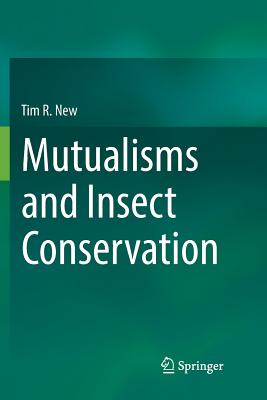Mutualisms and Insect Conservation
暫譯: 互惠關係與昆蟲保育
New, Tim R.
- 出版商: Springer
- 出版日期: 2018-08-12
- 售價: $6,930
- 貴賓價: 9.5 折 $6,584
- 語言: 英文
- 頁數: 232
- 裝訂: Quality Paper - also called trade paper
- ISBN: 3319863673
- ISBN-13: 9783319863672
海外代購書籍(需單獨結帳)
相關主題
商品描述
Documenting and understanding intricate ecological interactions involving insects is a central need in conservation, and the specialised and specific nature of many such associations is displayed in this book. Their importance is exemplified in a broad global overview of a major category of interactions, mutualisms, in which the interdependence of species is essential for their mutual wellbeing. The subtleties that sustain many mutualistic relationships are still poorly understood by ecologists and conservation managers alike. Examples from many parts of the world and ecological regimes demonstrate the variety of mutualisms between insect taxa, and between insects and plants, in particular, and their significance in planning and undertaking insect conservation - of both individual species and the wider contexts on which they depend. Several taxonomic groups, notably ants, lycaenid butterflies and sucking bugs, help to demonstrate the evolution and flexibility of mutualistic interactions, whilst fundamental processes such as pollination emphasise the central roles of, often, highly specific partnerships. This compilation brings together a wide range of relevant cases and contexts, with implications for practical insect conservation and increasing awareness of the roles of co-adaptations of behaviour and ecology as adjuncts to designing optimal conservation plans. The three major themes deal with the meanings and mechanisms of mutualisms, the classic mutualisms that involve insect partners, and the environmental and conservation lessons that flow from these and have potential to facilitate and improve insect conservation practice. The broader ecological perspective advances the transition from primary focus on single species toward consequently enhancing wider ecological contexts in which insect diversity can thrive.
商品描述(中文翻譯)
記錄和理解涉及昆蟲的複雜生態互動是保育中的一個核心需求,而本書展示了許多此類關聯的專門性和特定性。它們的重要性在於對一類主要互動——互惠關係的全球概述中得到了體現,其中物種之間的相互依賴對於它們的共同福祉至關重要。許多互惠關係所維持的微妙之處,生態學家和保育管理者仍然了解得不夠透徹。來自世界各地和不同生態系統的例子展示了昆蟲類群之間,以及昆蟲與植物之間的多樣互惠關係,特別是它們在規劃和進行昆蟲保育(無論是針對單一物種還是它們所依賴的更廣泛背景)中的重要性。幾個分類群,特別是螞蟻、藍蝶和吸蟲,幫助展示了互惠互動的演化和靈活性,而授粉等基本過程則強調了通常高度特定的夥伴關係的核心角色。本書彙集了各種相關案例和背景,對實際的昆蟲保育具有啟示意義,並提高了對行為和生態的共同適應角色的認識,這些角色是設計最佳保育計劃的輔助因素。三個主要主題涉及互惠關係的意義和機制、涉及昆蟲夥伴的經典互惠關係,以及從這些關係中得出的環境和保育教訓,這些教訓有潛力促進和改善昆蟲保育實踐。更廣泛的生態觀點推進了從單一物種的主要關注轉向增強昆蟲多樣性能夠繁榮的更廣泛生態背景。
作者簡介
作者簡介(中文翻譯)
榮譽教授 Tim New 是一位昆蟲學家,對昆蟲系統學、生態學和保育有廣泛的興趣。他長期任教於墨爾本的拉德羅比大學,並廣泛旅行以收集和研究世界各地的昆蟲。他在這些主題上發表了大量的著作,包括約 45 本書籍。他在全球被認可為昆蟲保育的主要倡導者之一。































